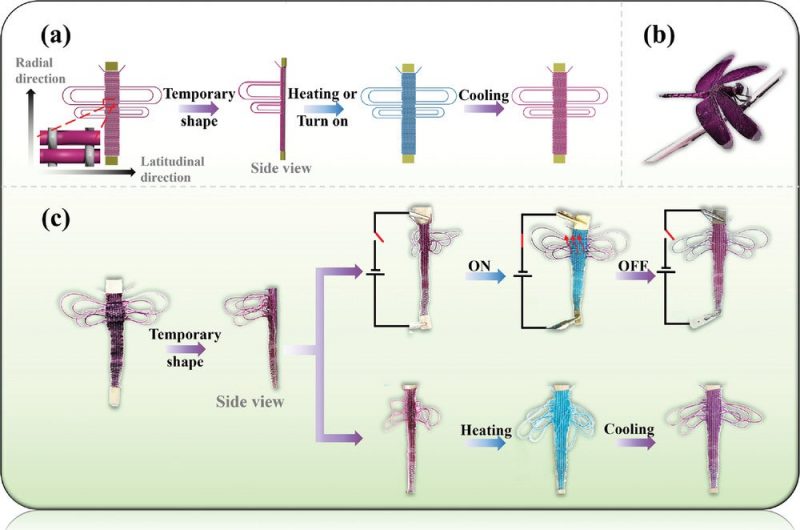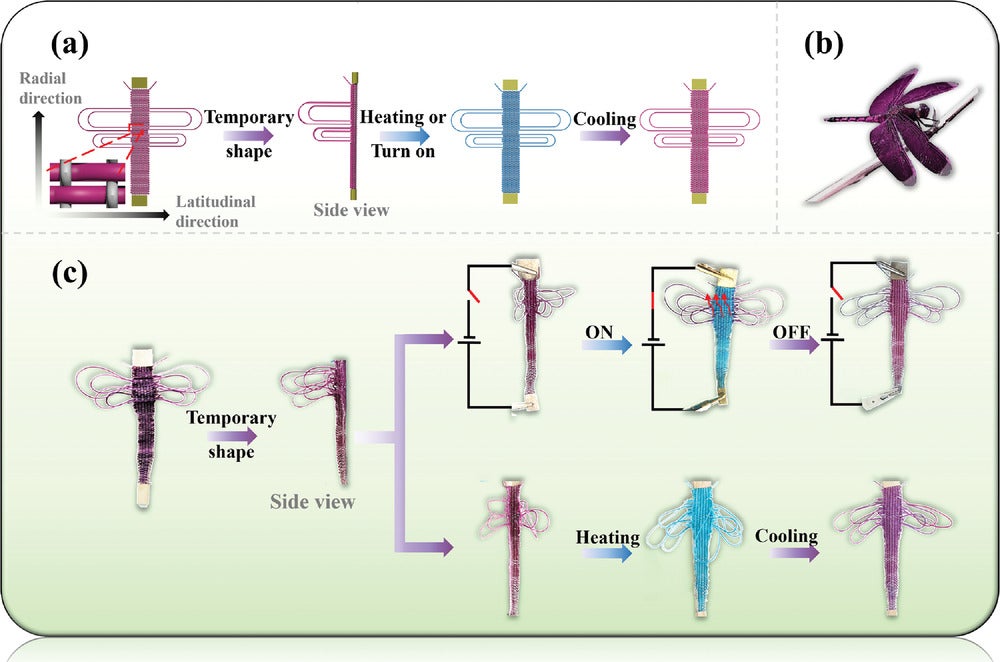A new color-changing, shape-shifting fabric responds to heat and electricity

Imagine throwing on a coat that actively warms you before walking down a frigid street in winter, or slipping on wearable gloves that simulate sensation and change form while playing a VR video game. Both accessories are closer to reality than ever, and could be manufactured using the same, first-of-its-kind smart material.
Designed by researchers at the University of Waterloo and detailed in a recent paper published in Nano-Micro Small, the new fabric is billed as the world’s first stimuli-responsive material (SRM) capable of reacting to two external influences—in this case, both heat and electricity. In doing so, the novel SMP can not only change color and shape, but can return to its original form after the stimuli is removed. Check out a video of the material in action below:
To achieve their breakthrough, researchers employed a device similar to a traditional loom to manufacture a fabric composed of thin, interwoven recycled plastic polymer and stainless steel threads. Compared to previous, similar materials, the new fabric is activated via lower electrical voltage, thus making it cheaper and more energy-efficient. According to researchers’ paper, the lower voltage could enable the material to eventually be integrated in smaller, more portable devices like biomedical tools and environmental sensors.
Thanks to its convenience and simplicity, temperature sensitivity is one of the most common stimuli to employ while researching shape- and color-changing smart materials. As the team explains in their paper, however, precise stimulation is usually extremely difficult. Making their new SRM reactive to electricity thereby allows for much more localized responses via remote control.
To imbue their new fabric with its color-changing ability, additional threads containing thermochromic microcapsules (TMC) were woven alongside the strands of electrically conductive stainless steel. When heated, the TMC’s outer shell becomes translucent to expose its inner coloration. Once cooled, the shell again becomes opaque, thus returning to its original exterior hue.
“The mentioned features make the fabric an outstanding candidate for wearable devices, textiles, sensing, anti-counterfeiting, human-scale orthopedic device fields, and biomimetic applications,” researchers contended in their findings. To show off the latter potential, the team even constructed a cute, dragonfly-shaped form by subjecting their smart fabric to heat and electrical charges.

“Through the ability to sense and react to environmental stimuli such as temperature, this is proof of concept that our new material can interact with the environment to monitor ecosystems without damaging them,” said Milad Kamkar a professor of chemical engineering and paper co-author.










